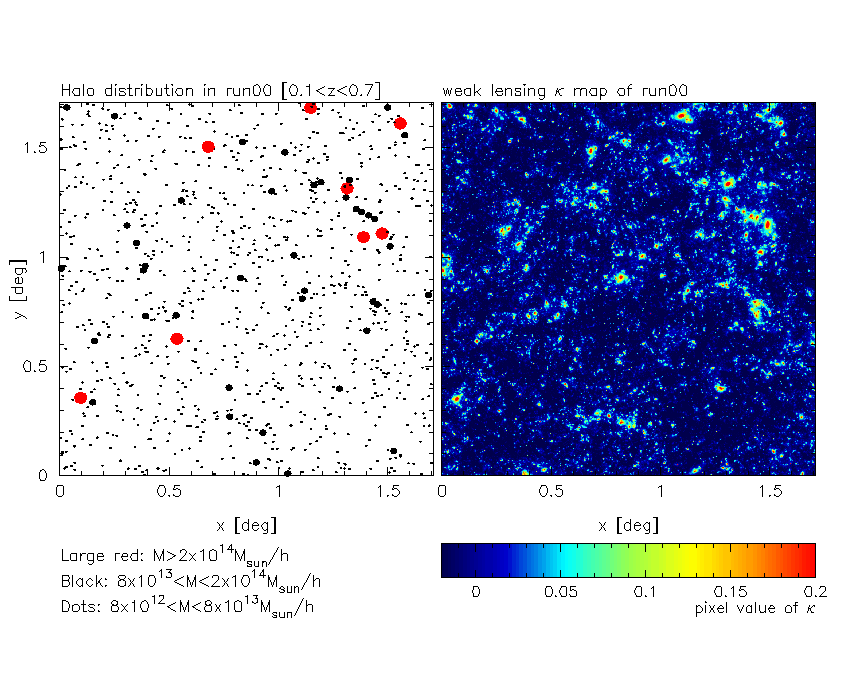Division of Science, NAOJ
An empirical method for mitigating an excess up-scattering mass bias on the weak lensing mass estimates for shear-selected cluster samples
Authors: Takashi Hamana (NAOJ)
Overview:
An excess up-scattering mass bias on a weak lensing cluster mass estimate is a statistical bias that an observed weak lensing mass of a cluster of galaxies is, in a statistical sense, larger than its true mass because of a higher chance of up-scattering than that of down-scattering due to random noises in a weak lensing cluster shear profile. This non-symmetric scattering probability is caused by a monotonically decreasing cluster mass function with increasing mass. We examine this bias in weak lensing shear-selected clusters, and present an empirical method for mitigating it. In so doing, we perform the standard weak lensing mass estimate of realistic mock clusters generated using the super-computer system, XC50, at Center for Computational Astrophysics, NAOJ, and find that the weak lensing mass estimate based on the standard chi-square analysis gives a statistically correct confidence intervals, but resulting best-fitting masses are biased high on average. Our correction method uses the framework of the standard Bayesian statistics with the prior of the probability distribution of the cluster mass and concentration parameter from recent empirical models. We test our correction method using mock weak lensing clusters, and find that the method works well with resulting corrected. We applied the correction method to weak lensing shear-selected cluster samples from Hyper Suprime-Cam survey S16A and S19A data, and present bias-corrected weak lensing cluster masses.


Link to the paper: https://academic.oup.com/pasj/article/75/1/14/6819922
Link to Hyper Suprime-Cam Subaru Strategic Program: https://hsc.mtk.nao.ac.jp/ssp/
Link to CfCA: https://www.cfca.nao.ac.jp/

